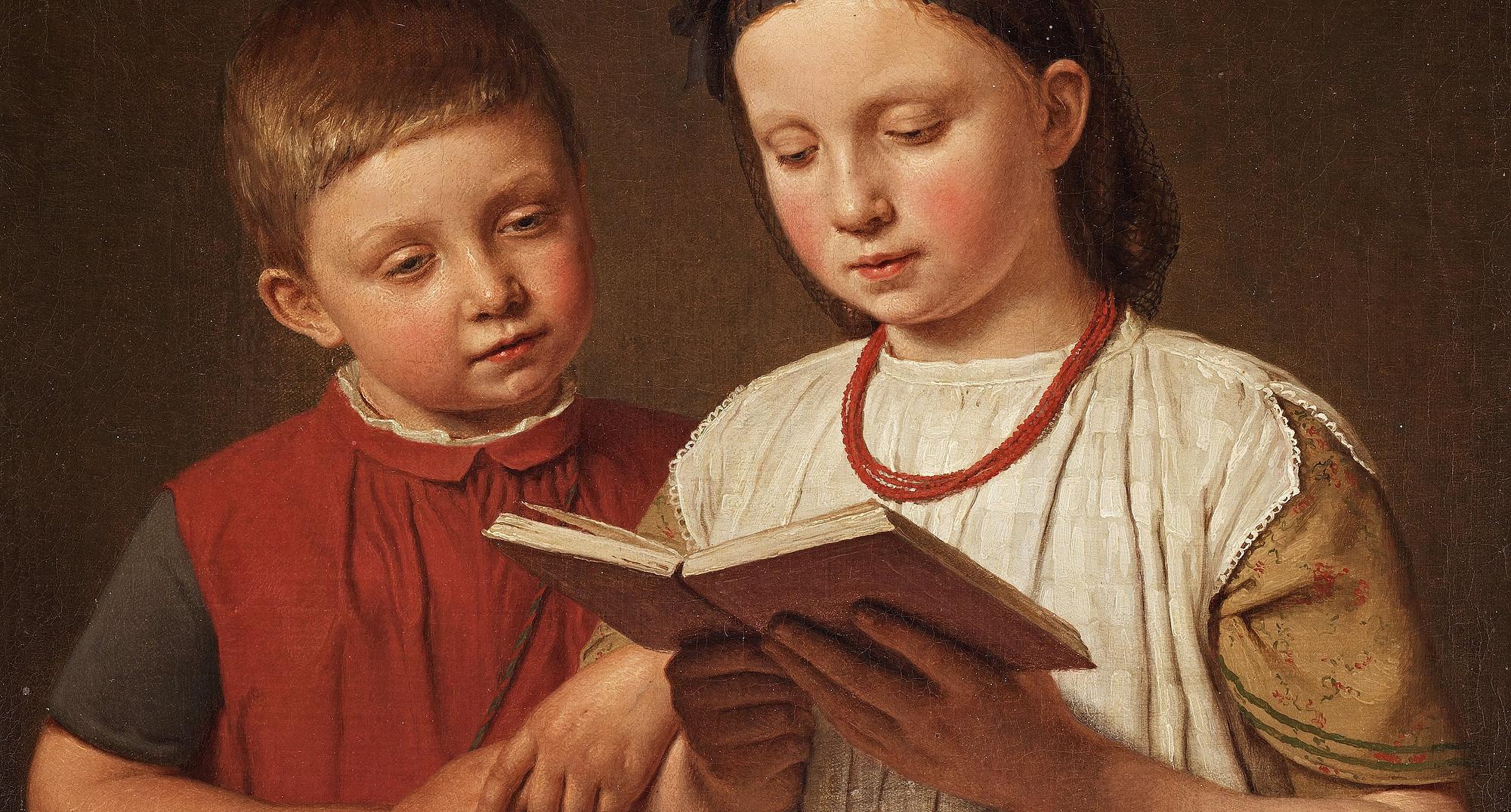
A special double portrait by Christen Købke
In the autumn of 2018, the museum acquired a late work by the Danish Golden Age painter Christen Købke: Two reading children. The artist’s son Peter and niece Cecilie Feilberg, later Gottlieb (1845). Prior to this acquisition, the painting had been part of a private collection abroad for many years. The work has only been on public display on one previous occassion since 1912, specifically at the Hirschsprung Collection’s special exhibition last year: Keeping up Appearances. Portraits and emotions in the Golden Age. Acquired with support from the New Carlsberg Foundation and the Danish Agency of Culture and Palaces, the work allows the museum to present a key aspect of Købke’s production that has not previously been represented at the museum: children’s portraits.

Købke often painted his own intimate surroundings, including the local area around the Citadel in Copenhagen and his family and friends. The various children of his family were among his favourite subjects, and in 1845 he painted his son and niece. The two children stand arm in arm as Cecilie, who was eight at the time, reads to the four-year-old Peter. Cecilie was the daughter of Købke’s sister, Conradine Feilberg, and the girl stayed temporarily with her grandparents in Copenhagen during her mother’s confinement, giving birth to another child. In one of his letters to his sister, Købke said: ‘There is a heartfelt friendship between your Cicilie and my Peter’, and the close relationship between the cousins served as a poignant reflection of the intimacy between Købke and his sister. The tender care displayed by the girl for her younger cousin provides an image of this earnest friendship, accentuated here by their close physical proximity.
The first half of the nineteenth century saw great and widespread interest in the innocence of childhood and in children’s naïve approach to the world, and Købke’s painting inscribes itself in this fascination. The work also has a kinship with the museum’s other portraits of children done during this period, including Portrait of C.F. Holm’s children (1832) by Købke’s teacher at the art academy, C.W. Eckersberg (1783–1853). This work too presents children engrossed in reading a book. Children’s literature became increasingly popular during the Golden Age, and physical proximity centred on a book was a widely used subject in portraits of children during this time.